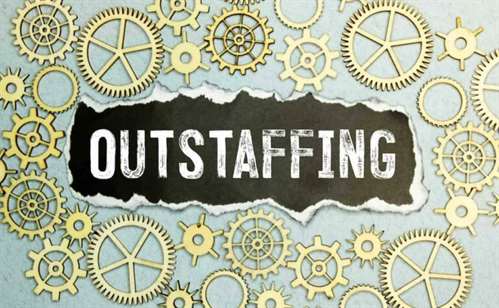Before you start any CCB meeting or review, make sure that everyone involved knows their roles and responsibilities. The CCB typically consists of a chairperson, a secretary, and representatives from various functional areas, such as engineering, testing, quality, customer, and management. The representatives review the change requests, provide feedback, and vote on the approval or rejection of the changes. Clarifying the roles and responsibilities of each CCB member helps to avoid confusion, duplication, and delays.

The authority of the Change Control Board may vary from project to project (see e.g. Consensus-based decision making), but decisions reached by the Change Control Board are often accepted as final and binding. Appropriate evaluation criteria should be developed in the CM Plan and applied according to the scope and tier of the Architectural Description effort. The evaluation criteria must include factors that test compliance with the Net-Centric Reference Architectures and the DoD IE as outlined in Section 3.0 of the DoDAF and the Net-Centric Guidance contained in Volume 2. The results of architecture evaluations should be used to guide decisions for approving proposed changes, as well as in planning future extensions or updates to the Architectural Description.
What is a Change Advisory Board?
A change request is a formal document that describes the proposed change, its rationale, its impact, its priority, and its dependencies. Supporting documents may include technical specifications, design drawings, test results, risk assessments, cost estimates, and customer feedback. Preparing these documents ahead of time ensures that the CCB has all the information it needs to evaluate the change request and make an informed decision.
The organization’s change management policy will define the CAB’s constitution and its scope, which can include anything from proposals and deployments to changes to roles and documentation. Organizations may choose to have a single CCB handling change requests across https://www.globalcloudteam.com/ multiple projects. A low-level CCB could handle lower priority change requests, for instance non-customer-facing features or changes with low/no cost impact. A higher-level CCB could tackle major change requests that have significant impact on costs or customer.
RE Definition: Configuration Control Board
TWGs provide the subject-matter expertise necessary to ensure that documents, the DM2, and other products under configuration control of the CCB are maintained in a responsible manner. TWGs, when tasked by the CCB, provide detailed and comprehensive technical review of proposed changes and recommendations to the CCB on action(s) to be taken that result from recommended changes. A Change Control Board (CCB), also known as the configuration ccb configuration control board control board, is a group of individuals, mostly found in software-related projects. The group is responsible for recommending or making decisions on requested changes to baselined work. A structured and consistent process for CCB meetings and reviews can help streamline the workflow and reduce the risk of errors and inconsistencies. By following such a process, changes can be managed in a timely, transparent, and traceable manner.
Configuration management (CM) is a process of identifying, tracking, and controlling changes to the configuration items (CIs) that make up a system or product. A configuration control board (CCB) is a group of stakeholders that reviews and approves proposed changes to the CIs, ensuring that they are aligned with the project objectives, requirements, and standards. CCB meetings and reviews are essential for effective CM, but they can also be challenging, time-consuming, and prone to conflicts. One of the most difficult aspects of CCB meetings and reviews is effectively managing conflicts and expectations among the CCB members and other stakeholders.
What are Smart Contracts and How are Enterprises Using Them?
If you encounter difficulties in finding a laravel specialist for your startup or existing business, our team will come to the rescue! We provide outsource laravel application development services for all kinds of technical projects using cms. Our experience in this business allows us to find developers on a remote basis from Ukraine for a reasonable final price. The CAB can also meet to review previously executed changes particularly those that were unsuccessful or unauthorized, as well as plan the forward schedule of future changes particularly with regard to projected service outage and customer/business plans. Joseph is a global best practice trainer and consultant with over 14 years corporate experience. His passion is partnering with organizations around the world through training, development, adaptation, streamlining and benchmarking their strategic and operational policies and processes in line with best practice frameworks and international standards.
- Before you start any CCB meeting or review, make sure that everyone involved knows their roles and responsibilities.
- Preparing these documents ahead of time ensures that the CCB has all the information it needs to evaluate the change request and make an informed decision.
- Both permanent members of the CCB and members of all technical working groups are notified about all CCB meetings and all scheduled TWG sessions, as are the Combatant Commands and Defense Agencies.
- These CM activities are complementary with existing DoD CM processes for the DARS, the DoD Information Technology Standards Registry (DISR), and the Metadata Registry (MDR).
- His specialties are IT Service Management, Business Process Reengineering, Cyber Resilience and Project Management.
When it comes to management and control of changes to services and service components, one of the biggest challenges is determining who has the authority to make change decisions. Consistent with the federated architecture approach described in Section 3, essential architectural information must be registered with DARS so that discovery of reusable architectural data can be accomplished throughout the Department. Learn how ServiceOps can help you predict change risks using service and operational data, support cross-functional collaboration to solve problems, and automatically recommend problem resolutions. In some projects the CCB may also be responsible for verifying that approved changes are implemented. These CM activities are complementary with existing DoD CM processes for the DARS, the DoD Information Technology Standards Registry (DISR), and the Metadata Registry (MDR). A more comprehensive description of the overall CM Process is found online in the DoDAF Journal.
(Alias: CCB, change control board)
CM provides an orderly way to facilitate change, based on a documented requirements baseline, and utilizing best practices in the change management process. This is intended to ensure that expectations are fully understood and realized in an efficient manner, including proper consideration of all potential impacts on customers and resources. CM is a necessary and critical process to assure an orderly and stable evolution of any Architectural Description and also to ensure that the DoDAF remains current in the face of evolving methods and techniques of Architectural Description creation and management. The last best practice for conducting effective CCB meetings and reviews is to evaluate and improve the CCB performance.

The CAB must also look for conflicting requests—these cases in particular require CAB members to maintain holistic, business-outcomes views that don’t favor the particular team or individual seeking the change. The Change Control Board and Change Advisory Board share a similar focus of reviewing and making decisions for change requests, though their scopes vary widely. Regardless of differences, the structure for both change bodies must be clear, effective, and efficient.
Change management and decision making
His specialties are IT Service Management, Business Process Reengineering, Cyber Resilience and Project Management. In these cases, an Emergency Change Advisory Board (eCAB) can be formed as a temporary subset of the routine CAB. The eCAB may include some or all individuals from the CAB, and this group will meet outside the normal schedule to review the necessary emergency change(s).

Conflicts can arise due to varying perspectives, interests, preferences, or priorities for change requests, and expectations can differ based on the scope, complexity, urgency, or feasibility of the change requests. To manage these conflicts and expectations adequately, it is important to establish clear ground rules and guidelines for the CCB meetings and reviews, such as roles, responsibilities, procedures, criteria, and deadlines. Additionally, encouraging respectful and constructive dialogue between the CCB members and other stakeholders is essential; personal attacks, blame, or criticism should be avoided. Acknowledging and addressing any concerns or issues raised by the CCB members and other stakeholders should also be done while providing evidence, rationale, and alternatives where possible.
Change Control Board vs Change Advisory Board: What’s the Difference?
When a number of changes have accumulated, the TWG recommends a new DM2 baseline version be established and released. Upon, approval by the CCB, the new DM2 is published along with a record of changes from last baseline and a new working copy is setup. Depending on the typical activity in your IT department, your CAB may meet as often as twice weekly. No matter the frequency of meetings, the Change Manager should communicate the scheduled change required well in advance of meetings, so individuals on the CAB are prepared to make the best decisions.
